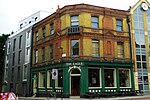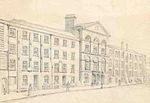City Academy, London
Further education colleges in LondonLearning and Skills BeaconsUse British English from January 2015

City Academy is an adult creative and performing arts academy, offering daytime, evening and weekend courses in dance, drama, singing, writing, filmmaking, photography, art, design, life skills, & business training in venues across Central London.
Excerpt from the Wikipedia article City Academy, London (License: CC BY-SA 3.0, Authors, Images).City Academy, London
Mount Pleasant, London Holborn (London Borough of Camden)
Geographical coordinates (GPS) Address Nearby Places Show on map
Geographical coordinates (GPS)
| Latitude | Longitude |
|---|---|
| N 51.52347 ° | E -0.11221 ° |
Address
Butcher Burns Solicitors
Mount Pleasant 47
WC1X 0AE London, Holborn (London Borough of Camden)
England, United Kingdom
Open on Google Maps









